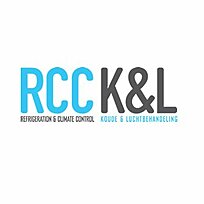
Vacuum insulation for refrigerated transport vehicles.
Vacuümisolatie voor geconditioneerde vervoermiddelen.
Author(s) : MEFFERT H. F. T.
Type of article: Article
Summary
The low thermal conductivity of vacuum insulation materials can only partially be realised as a consequence of boundary conditions and heat bridges caused by the insulated construction, especially with small insulation elements. The large specific mass of mineral filling materials is counteracting the trend towards lighter vehicles. Open plastic foams offer conformity with the wishes of the transport industry or of regulatory authorities, at somewhat lower thermal conductivity but better insulation efficiency. Gas release from the material and/or from adhesive resins, and leakage can be counteracted by pumping down again. The repartition of heat loads from external and internal sources and of space between air channels and insulation requires a user-friendly model for the conditioning of cargo in refrigerated spaces.
Details
- Original title: Vacuümisolatie voor geconditioneerde vervoermiddelen.
- Record ID : 1998-1238
- Languages: Dutch
- Source: Koude & Luchtbehandeling - vol. 90 - n. 9
- Publication date: 1997/09
- Document available for consultation in the library of the IIR headquarters only.
Links
See other articles in this issue (4)
See the source
Indexing
- Themes: Mobile air conditioning
- Keywords: Road transport; Calculation; Vacuum; Refrigerated transport; Heat transfer; Insulation; Container
-
LE TUNNEL SOUS LA MANCHE : UNE REVOLUTION POUR ...
- Date : 1991/11
- Languages : French
- Source: Rev. gén. Froid - vol. 81 - n. 9
View record
-
Maintenance education: the Thermo King Europe e...
- Author(s) : BARRY W. J.
- Date : 1997/07
- Languages : English
- Source: Maint. Asset Manag. - vol. 12 - n. 3
View record
-
LA CLIMATISATION DANS LES AUTOCARS.
- Author(s) : LEMOINE Y.
- Date : 1988
- Languages : French
- Source: Rev. gén. Froid - vol. 78 - n. 11
View record
-
Posploseni model gibanja zraka v predoru./ A ge...
- Author(s) : MODIC J., NOVAK P.
- Date : 1997/11
- Languages : Slovenian
- Source: Strojniski vestnik - Journal of mechanical Engineering - vol. 43 - n. 11-12
View record
-
LA CLIMATISATION DES VEHICULES DE GRAND TOURISME.
- Author(s) : BILLETTE J. M.
- Date : 1986
- Languages : French
- Source: La revue pratique du froid et du conditionnement d'air - vol. 40 - n. 620
View record
